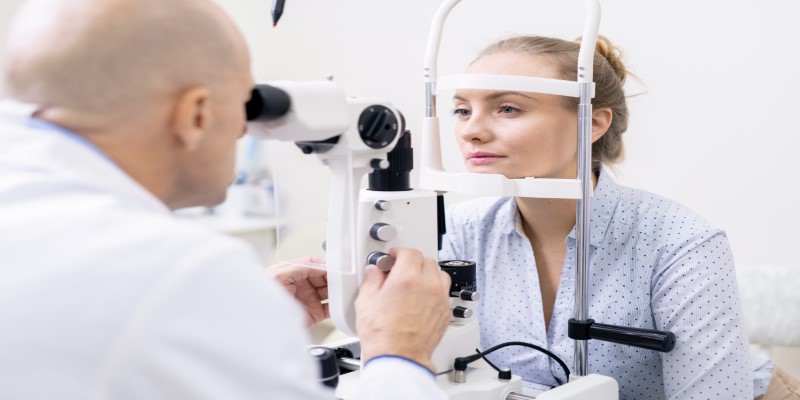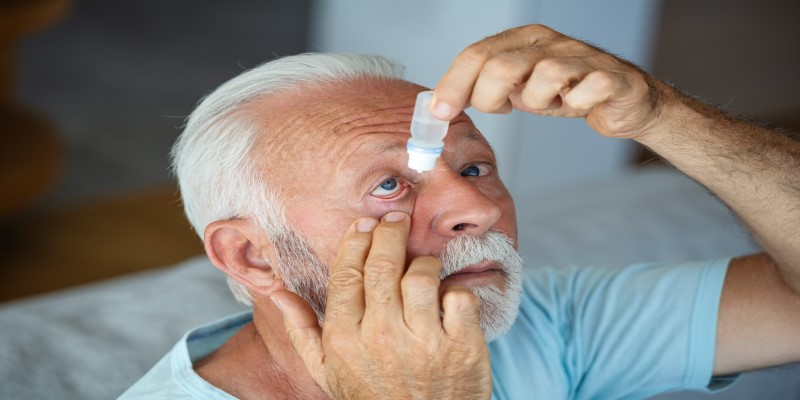Glaucoma is a serious eye condition that often sneaks up without any warning. It's like a silent intruder that can cause permanent damage if not detected and managed in time. In this overview, we'll delve into what glaucoma is, its signs and symptoms, how it's diagnosed, the available treatments, and why it's crucial to stay vigilant about your eye health.
An Overview of Glaucoma
So, what exactly is glaucoma? Well, it's not just one condition but a group of eye disorders that damage the optic nerve, typically due to increased pressure in the eye. The optic nerve is like the messenger highway between your eyes and brain, helping you see the world around you. When this highway gets damaged, it can lead to vision loss or even blindness.
Signs and Symptoms
Understanding the signs and symptoms of glaucoma is vital because, in its early stages, this eye condition often operates in stealth mode. Recognizing these indicators can prompt timely action, preventing further damage to your vision.
Gradual Loss of Peripheral Vision: One of the early signs of glaucoma is the subtle and gradual loss of peripheral vision. You may notice that your side or outer vision is not as clear as it used to be.
Tunnel Vision: As glaucoma progresses, some individuals experience tunnel vision. This means that your field of vision narrows, resembling the view through a tunnel. Everyday activities become challenging with limited visual scope.
Blurred Vision: Blurred vision is a common symptom of various eye conditions, including glaucoma. If your vision is consistently blurry, it's essential to consult an eye care professional for a comprehensive examination.
Seeing Halos Around Lights: Glaucoma can manifest as seeing halos around lights. This phenomenon can occur due to increased pressure in the eye, affecting how light enters and is processed by the eyes.
Headaches and Eye Pain: In some cases, individuals with glaucoma may experience headaches and eye pain. These symptoms are often associated with increased intraocular pressure and should not be ignored.
Diagnosis of Glaucoma
Diagnosing glaucoma is crucial in preventing irreversible damage to the optic nerve and preserving vision. Let's explore how eye care professionals identify this stealthy eye condition.
Regular Eye Check-ups: The First Line of Defense
The cornerstone of glaucoma diagnosis is regular eye check-ups. Even when you think your vision is fine, these routine exams can catch glaucoma in its early, asymptomatic stages. Eye care professionals recommend regular check-ups, especially for individuals over the age of 40 or those with a family history of glaucoma.
Measuring Intraocular Pressure: The Tension Check
One of the primary indicators of glaucoma is elevated intraocular pressure. During an eye exam, your eye care professional may use a tonometer to measure this pressure. While increased pressure doesn't necessarily mean you have glaucoma, it is a risk factor that needs further investigation.
Examining the Optic Nerve: The Highway Inspection
The optic nerve is like the information superhighway connecting your eyes to your brain. An eye care specialist will meticulously inspect the optic nerve utilizing a specialized tool known as an ophthalmoscope. Changes in the appearance of the optic nerve head, such as cupping or notching, could indicate glaucoma.
Assessing Visual Fields: Mapping Your Vision
Glaucoma often affects peripheral vision initially. Eye care professionals may conduct visual field tests to detect these subtle changes. During this test, you'll respond to flashes of light by pressing a button, helping to create a map of your visual field. Any irregularities in this map could be a sign of glaucoma.
Advanced Testing: Digging Deeper with OCT
In some cases, additional tests may be necessary to get a more detailed picture. Optical Coherence Tomography (OCT) is one such advanced diagnostic tool. It uses light waves to create cross-sectional images of the retina, helping to detect any structural changes that might indicate glaucoma.
Pressure Variability: 24-Hour Monitoring
Since intraocular pressure can fluctuate throughout the day, some cases of glaucoma might go undetected during a standard eye exam. In such situations, 24-hour intraocular pressure monitoring may be recommended to better understand pressure patterns.

Treatment of Glaucoma
Regarding glaucoma, timely and effective treatment is paramount in preserving your vision. Let's explore the various approaches used to manage this eye condition.
Prescription Eye Drops
In many cases, prescription eye drops are the first line of defense against glaucoma. These drops work by either reducing the production of intraocular fluid or increasing its drainage. It's like maintaining a delicate balance to keep the pressure within the eye in check.
Oral Medications
For some individuals, oral medications may be prescribed to complement the effects of eye drops. These medications may help reduce intraocular pressure by different mechanisms, offering an alternative or additional solution to manage glaucoma.
Laser Therapy
Laser therapy, or laser trabeculoplasty, is another option to treat glaucoma. A laser enhances fluid drainage from the eye during this procedure, reducing intraocular pressure. It's a relatively quick and outpatient intervention that can effectively control the condition's progression
.
Surgery
Surgical intervention may be considered in more advanced cases or when other treatments aren't sufficient. There are different types of glaucoma surgeries, and the choice depends on the individual's specific circumstances. Trabeculectomy, for example, involves creating a new drainage channel for the intraocular fluid.

Minimally Invasive Glaucoma Surgery (MIGS):
A relatively recent development in glaucoma treatment is MIGS. These procedures are less invasive than traditional surgeries and aim to reduce intraocular pressure by improving fluid outflow. MIGS is often considered when other treatments haven't provided the desired results.
Conclusion
In conclusion, glaucoma is a serious eye condition that requires attention and awareness. Regular eye check-ups are not just for updating your glasses prescription; they are crucial in detecting conditions like glaucoma in their early stages. Remember, early detection can make a significant difference in managing and slowing down glaucoma progression. So, take care of your eyes, and don't underestimate the importance of routine eye exams. Your vision is worth it.




